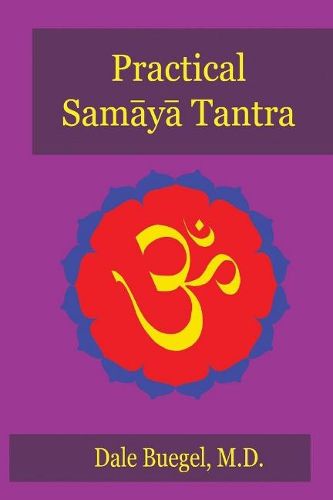Readings Newsletter
Become a Readings Member to make your shopping experience even easier.
Sign in or sign up for free!
You’re not far away from qualifying for FREE standard shipping within Australia
You’ve qualified for FREE standard shipping within Australia
The cart is loading…






Practical Samaya Tantra contains more than fifty practices to aid practitioners on their journey of self-exploration. These practices are meant for the experienced practitioner that seeks to understand the fine points of pra?a and its regulation during asana, pra?ayama, and different states of consciousness. The following is a list of chapters and practices to facilitate that understanding.Following an introduction to the path of samaya tantra, the book is divided into the following sections:Description and practices help to understand the rhythms and flows of pra?a, both those that have the breath as a vehicle, as well as those that do not have breath as a vehicle.Building awareness of the subtle flows and rhythms of pra?a are part of the next section. Practices presented help in developing pra?a dhara?a, the ability to focus directly on the subtleties of pra?a. The study of pra?a during certain asanas is presented.A chapter is devoted to each of the cakras to help practitioners develop an awareness of the various rhythms and flows present within the energetics of each cakra. Use of bija mantras to tease the gateways of the cakras is presented so that the cakras may then open and impart their teaching.The relationship of pra?a to sa?skaras is described as well as a method of using pra?a flows to bring the waves of the mind to stillness. Principles and practices of transmutation and transformation that are key to the path of tantra are presented both to understand the process of self-purification, and also to help understand the nature of the siddhis.The role of advanced pra?ayama practices to free restrictions in the central flow of pra?a is explained. These practices are accompanied by self-applied neuromuscular and somatics techniques to help prepare the structures of the breath for advanced pra?ayama practice. Such practices include bhutasuddhi, agnisara, nauli, and kevala kumbhaka (suspension of the need to breathe).To help master states of consciousness, practices of aum kriya, sitali kara?a, and yoga nidra are also presented.
$9.00 standard shipping within Australia
FREE standard shipping within Australia for orders over $100.00
Express & International shipping calculated at checkout
Practical Samaya Tantra contains more than fifty practices to aid practitioners on their journey of self-exploration. These practices are meant for the experienced practitioner that seeks to understand the fine points of pra?a and its regulation during asana, pra?ayama, and different states of consciousness. The following is a list of chapters and practices to facilitate that understanding.Following an introduction to the path of samaya tantra, the book is divided into the following sections:Description and practices help to understand the rhythms and flows of pra?a, both those that have the breath as a vehicle, as well as those that do not have breath as a vehicle.Building awareness of the subtle flows and rhythms of pra?a are part of the next section. Practices presented help in developing pra?a dhara?a, the ability to focus directly on the subtleties of pra?a. The study of pra?a during certain asanas is presented.A chapter is devoted to each of the cakras to help practitioners develop an awareness of the various rhythms and flows present within the energetics of each cakra. Use of bija mantras to tease the gateways of the cakras is presented so that the cakras may then open and impart their teaching.The relationship of pra?a to sa?skaras is described as well as a method of using pra?a flows to bring the waves of the mind to stillness. Principles and practices of transmutation and transformation that are key to the path of tantra are presented both to understand the process of self-purification, and also to help understand the nature of the siddhis.The role of advanced pra?ayama practices to free restrictions in the central flow of pra?a is explained. These practices are accompanied by self-applied neuromuscular and somatics techniques to help prepare the structures of the breath for advanced pra?ayama practice. Such practices include bhutasuddhi, agnisara, nauli, and kevala kumbhaka (suspension of the need to breathe).To help master states of consciousness, practices of aum kriya, sitali kara?a, and yoga nidra are also presented.